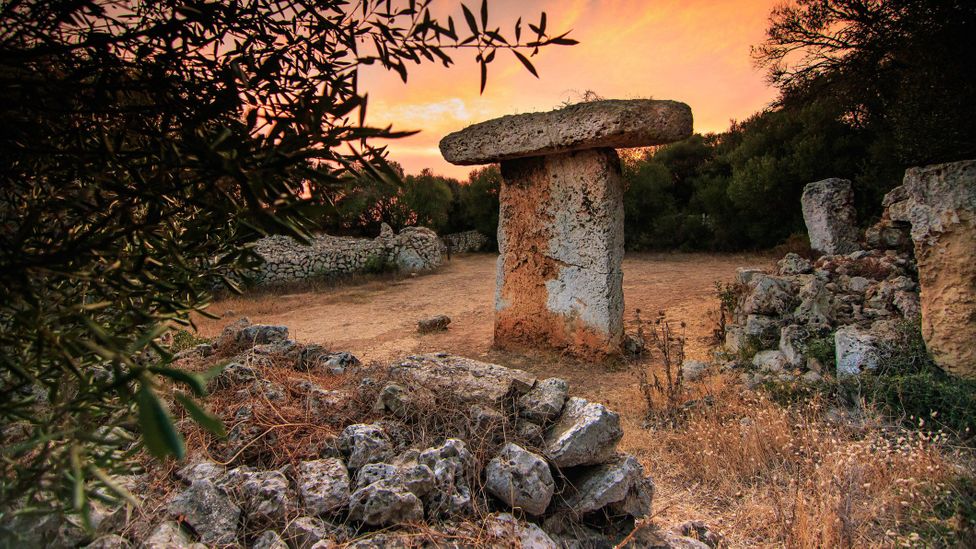Menorca's enormous T-shaped stone towers, which soar more than 5m high, gave rise to the legend that they were built by giants 2,500 years ago.
I
I'd travelled to Menorca to hike the famous Camí de Cavalls coastal path and swim in its neon-blue waters. When I arrived, I knew nothing about the island's rich archaeological heritage – but it was everywhere I looked.
Menorca has one of the highest concentration of prehistoric sites in the world (a selection of which are being considered for inclusion in Unesco's World Heritage list in 2023), and there were megalithic stone monuments standing at the junctions of roads and in green fields where black Menorquín horses grazed.
As I walked, I passed gigantic T-shaped structures called "taulas" (tables). Taller than a person and created from colossal stone slabs that glowed under the bright Spanish sun, they immediately caught my attention. When I learned these tables had given rise to legends about giants living on the island, I started to wonder who really built them, how they were made and what they were used for.
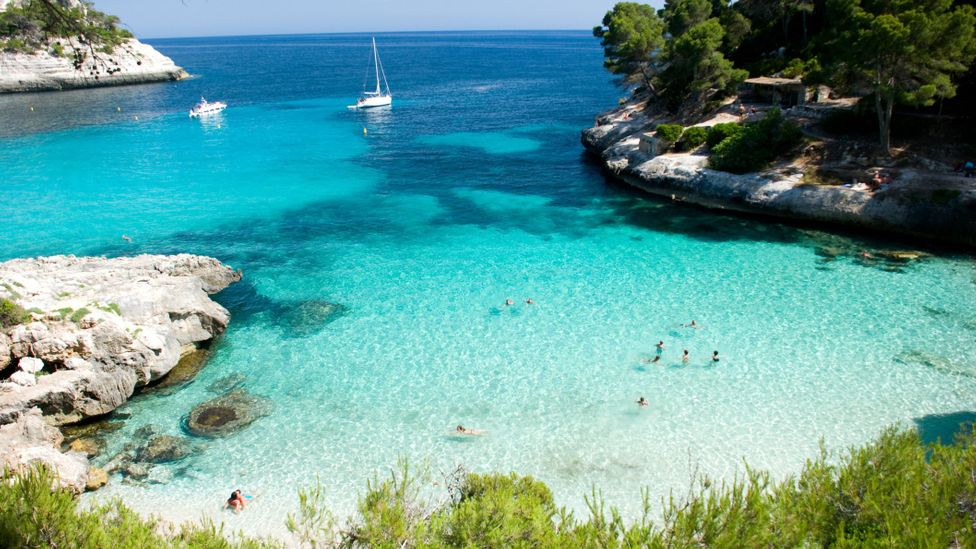
While Menorca is renowned for its beaches and bays, the island also has a rich archaeological heritage (Credit: Gaizka Portillo Benito/Getty Images)
I spoke with archaeologists Cristina Bravo and Irene Riudavets to uncover the secrets of the stones. They met on a dig, co-founded Nurarq (a company to promote Menorca's cultural heritage) and now split their time between doing archaeological research and guiding tours. Riudavets told me that the taulas, which are only found on Menorca, were constructed about 2,500 years ago by the mysterious Talayotic civilisation, a prehistoric people who settled on the island in the Bronze Age.
No one in the past could understand who could have built the taulas because it seems impossible. That's why we have the legends that the taulas are tables for giants
"No one in the past could understand who could have built the taulas because it seems impossible," Bravo told me. "That's why we have the legends that the taulas are tables for giants."
She explained that each of the two boulders that form the taula can be as big as 5m and weigh up to 13 tonnes. A large slab was used as the vertical base and the second "capital stone" was balanced across it, forming the top of the "table".
According to Bravo, the Talayotic people used tree trunks to transport the huge stones, creating dirt mounds as a form of scaffolding as they hoisted them up into place. They didn't bother with mortar or binding materials, instead using something called "cyclopean technique", which essentially means stacking the dry stones together. "Even the technical term for the archaeology has a reference to giants," said Riudavets, and as she spoke, I imagined one-eyed monsters slotting huge rocks together.
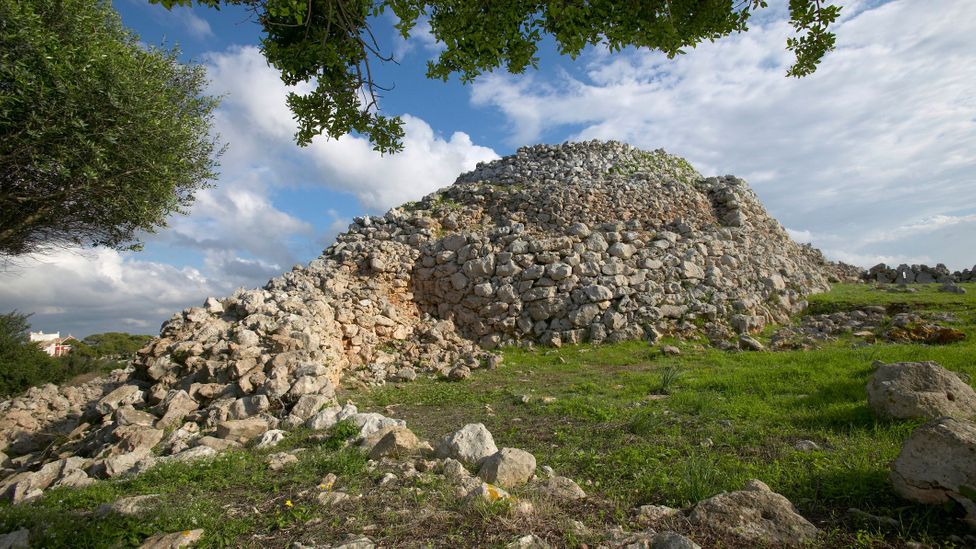
Menorca has nearly 1,600 archeological sites, more per square kilometre than anywhere else in the Mediterranean (Credit: Hans Georg Roth)
I asked her why she was so fascinated by this culture. "Because even though they were on this small island, surrounded by other Mediterranean cultures, the Talayotic people maintained their own strong identity and created totally new forms of buildings… that are monumental and unique," she said.
What I learnt about the Talayotic culture from the archaeologists only made me more curious. These people occupied just two of the Balearic Islands (Menorca and Mallorca) and were seemingly disinterested in expansionism at a time when the Greeks and Carthaginians were busily colonising everything they possibly could, including nearby Ibiza.
They were quirky, too: despite living so close to the sea, they did not eat fish, Bravo told me. And despite knowing about the potter's wheel from encounters with other cultures (the wheel was widely used by other Mediterranean cultures at this time), they didn't adopt it, choosing instead to keep making pottery by hand.
They also built ancient "skyscrapers" – dome-shaped watch towers called talayots that reached up to 12m high – and created burial chambers with sea views. Yet, much about them remains a mystery, including, crucially, the exact purpose of the taulas, the very structures that make this civilisation distinctive.
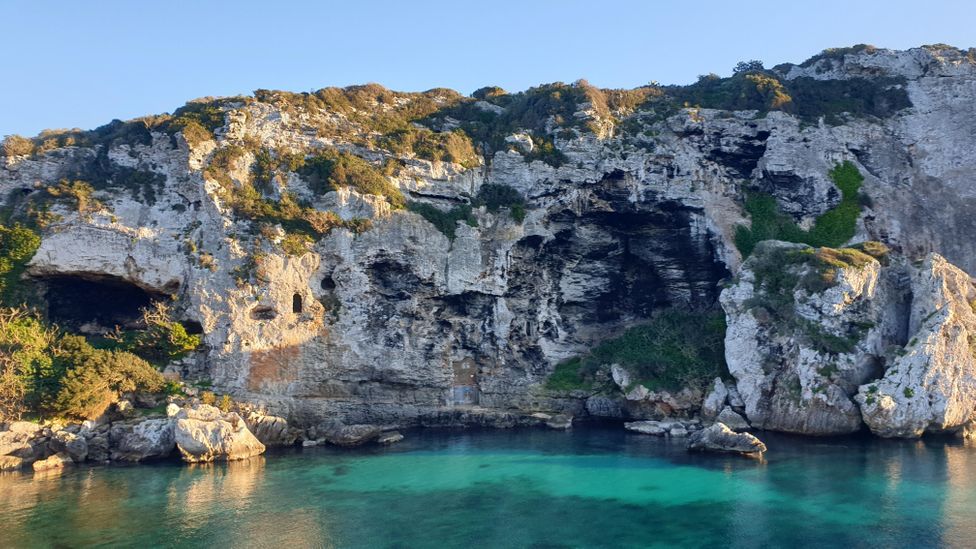
More than 100 burial caves are hewn into the rocks at Cales Coves (Credit: L J Coffey)
One of the reasons we know so little is because the Talayotic people left no written records. However, thanks to an ancient Greek historian called Diodorus Siculus, who wrote about them in his epic 40-volume Bibliotheca Historica between 60 and 30 BCE, we know that their warriors were renowned as the deadliest slingshot warriors in the Mediterranean. "Their mothers were the ones training them, placing a loaf of bread on top of a branch… until they were able to hit it with a stone, they couldn't eat that day," Bravo said. Thus motivated, "they became very precise, very quickly".
Occasionally these warriors were recruited as mercenaries; the Carthaginians hired them to fight against the Greeks. But while Diodorus records this, and also notes that they spent their wages on wine and women, his writings shed no light on the taula mystery.
One day, as I cycled to my favourite swimming cove, I stopped at Binissafullet, a Talayotic settlement in the island's south-east that is right alongside the main road. I had cycled past almost every day of my trip and noticed how the sun lights up the taula at different times of the day, turning it from honey- to golden-hued. This is one of seven taulas still standing on the island, but we know there were originally at least 32, possibly more, and it's believed that they were used for religious purposes. ("All archaeologists agree because statues of gods, altars and other objects that were only related to ritual purposes have been excavated near taulas," Riduavets said.)
Each Talayotic village had at least one temple or sanctuary in the shape of a horseshoe, with the taula placed in the centre. "Many people think [the taula] were open air, but our excavations found evidence that these sanctuaries were covered. The ceilings were made of rubble, branches and compacted clay," Riudavets explained.
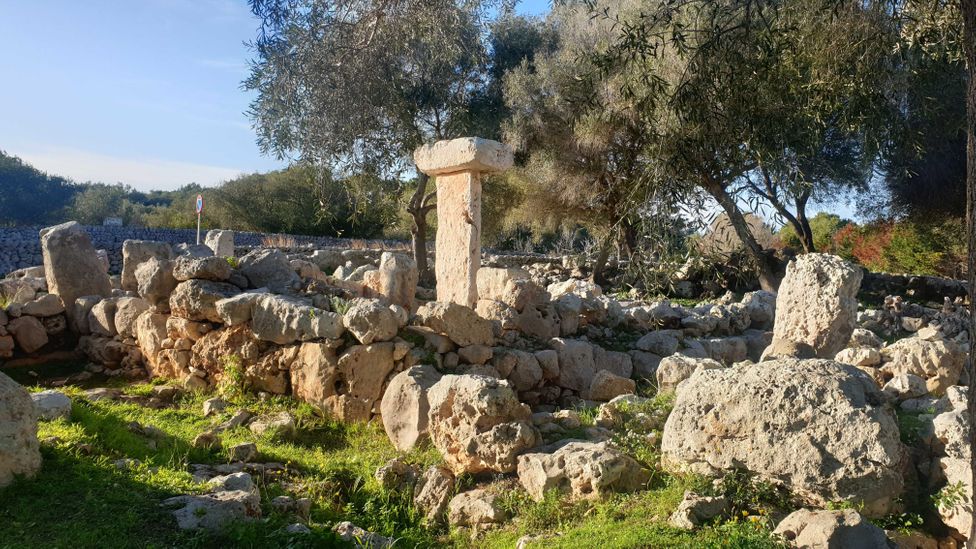
The Talayotic settlement of Binissafullet is located in the island's south-east (Credit: L J Coffey)
She and Bravo have fully excavated one of these sanctuaries at a site called Cudia Cremada, near the capital, Mahón, in the island's south, and they've spent a lot of time considering the purpose of taulas. "We started to think about the symbolism," Bravo said, "What was the T-shape for? Does it have a symbolic function? Or was it just an architectural function?"
While previously it was believed that the T-shape may represent Tanit, a Carthaginian goddess that the Talayotic people adopted, this hypothesis has lost favour with modern researchers. Riudavets published a paper in 2020 setting out a new theory: she and her fellow authors believe that it may represent a closed door to the world of the gods, with the huge vertical slab blocking what would be the doorway and thus indicating that humans cannot pass through. "But gods can pass through it and be there with you at the rituals held in the sanctuary," said Bravo.
Menorca was and is a sacred and magical island. For Menorcans, the talayotic enclosures and the taulas are vestiges of their ancestral past
While the exact meaning of the taulas may be lost to time, their spiritual energy is still potent today, says Luís Montero, a local Menorcan and holistic therapist who runs a centre in Mahón. Montero believes they were "above all a symbol of divinity" and regularly meditates besides the taula at Binissafullet.
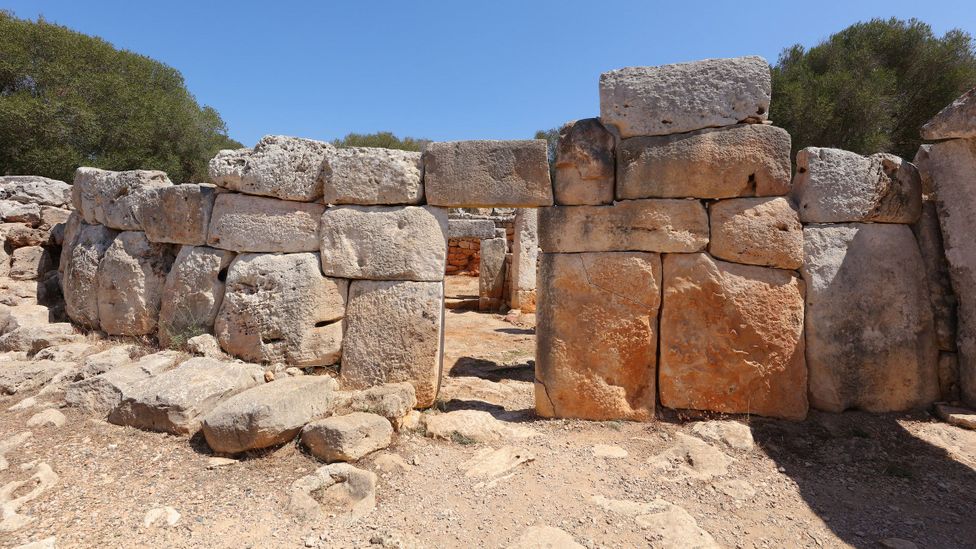
At Torre d'en Galmés, Talayotic circular houses have been restored by archaeologists (Credit: Ivanvieito/Getty Images)
"Menorca was and is a sacred and magical island," he told me, explaining that he has developed a new system of deep energy work based on Talayotic energies, which he says works in a similar way to reiki to promote healing. "For Menorcans, the talayotic enclosures and the taulas are vestiges of their ancestral past, and they have a huge amount of respect for them," Montero said. "On certain full moons, offerings are still made by some locals."
As I climbed a hill near section 16 of the Camí de Cavalls path between Alaior and Son Bou in the island's south, it became clear why the Talayotic people chose to locate their largest village, Torre d'en Galmes, up here. The vantage point offers views over the southern coast, important for keeping a lookout for invaders. I walked around the remains of the three talayots at the top and left some flowers in the corner of the sanctuary up here, an offering to unknown gods.
On the lower southern slopes of the hill were Talayotic circular houses, which have been restored by archaeologists. In total, the population here was estimated at between 200 to 300 people, according to Riduavets, and the settlement had a sophisticated fresh-water collection system created from a series of different-sized cisterns carved out from the rock.
If the island is granted World Heritage status this year, it will unlock more funding for much-needed research that may help answer some of the mysteries of the taulas. It would also be a boon for cultural tourism, encouraging new visitors to explore this beautiful island with its unique archaeological heritage.
BBC Travel's Lost Civilisations delves into little-known facts about past worlds, dispelling any false myths and narratives that have previously surrounded them.
---
Join more than three million BBC Travel fans by liking us on Facebook, or follow us on Twitter and Instagram.
If you liked this story, sign up for the weekly bbc.com features newsletter called "The Essential List". A handpicked selection of stories from BBC Future, Culture, Worklife and Travel, delivered to your inbox every Friday.
